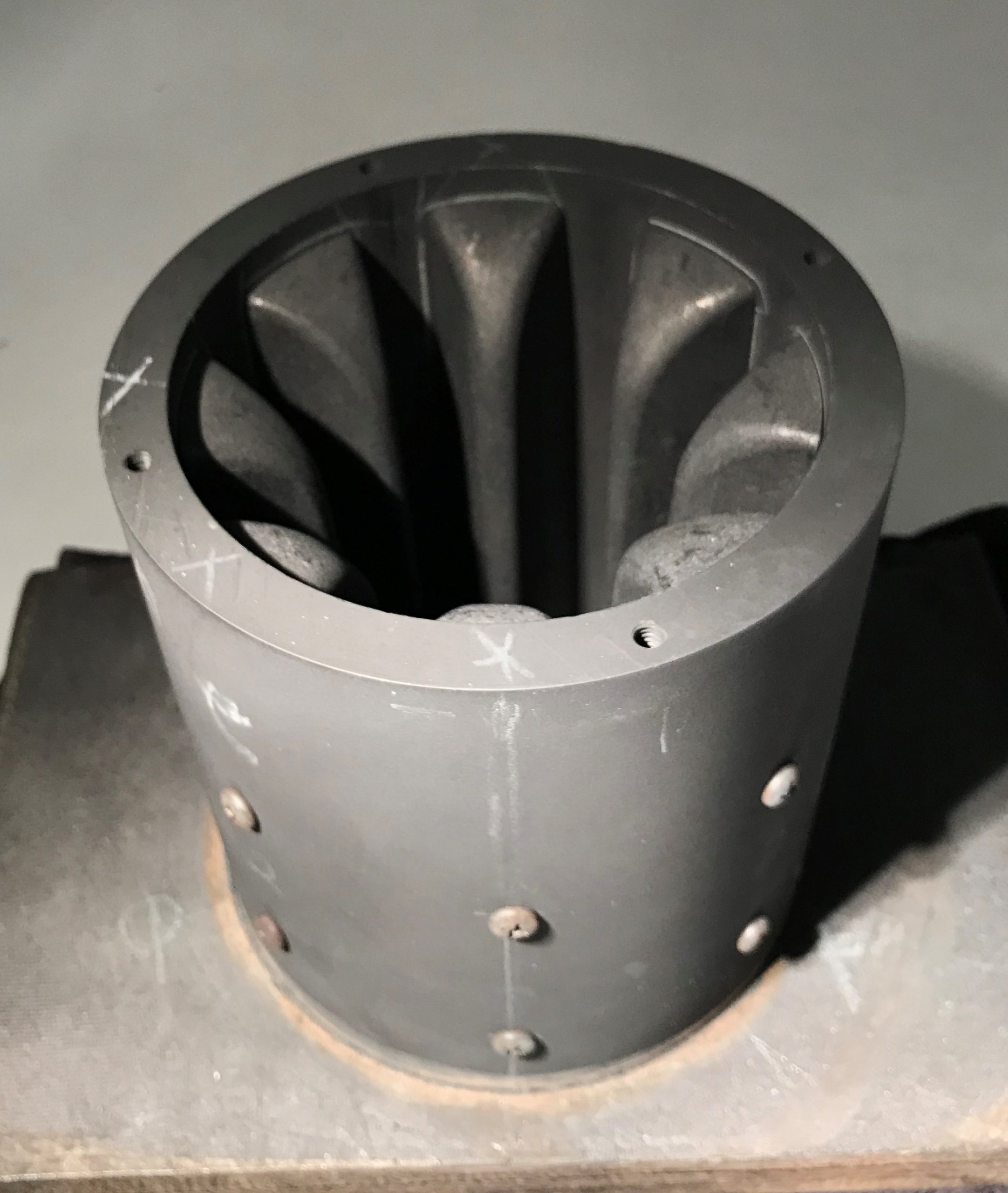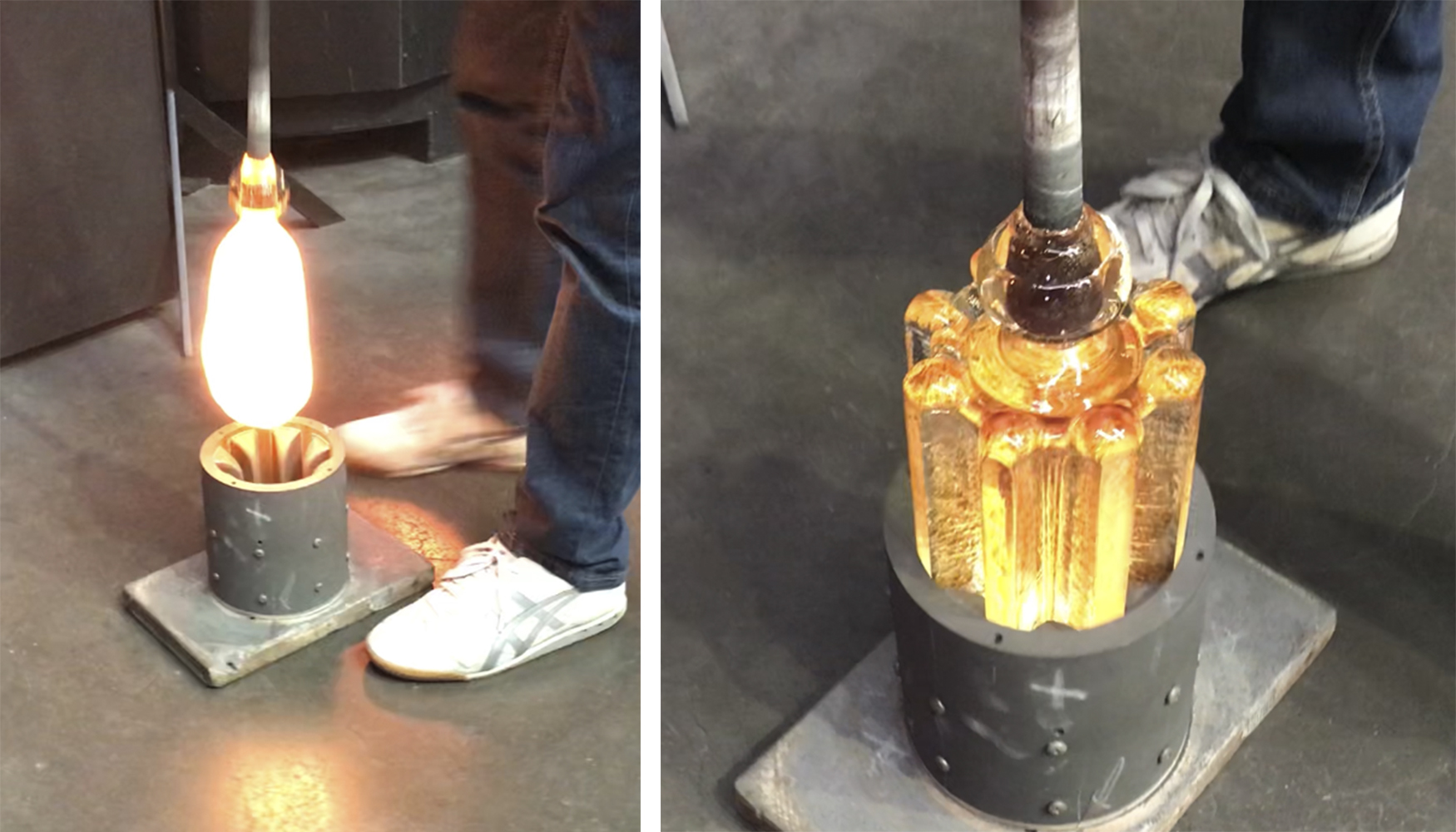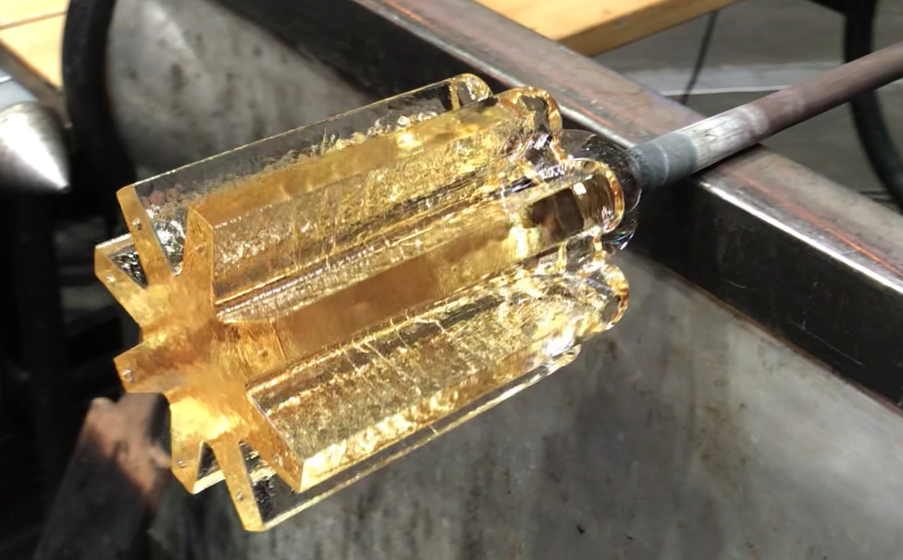The United Nations has designated 2022 the International Year of Glass. Cooper Hewitt is celebrating the occasion with a yearlong series of posts focused on the medium of glass and museum conservation.
This month’s post features Cooper Hewitt’s National Design Awards, a program that honors innovation and impact in many fields of design and recognizes the power of design to change the world.
While this year’s winners will be announced later this year, we will focus here on the award itself—the actual material object each winner receives. And guess what? It’s made of glass (image 1)! The award was originally designed by William Drenttel and Jessica Helfand in 2000 in the form of a twisted asterisk and produced by Saint-Gobain Advanced Ceramics of a silicon carbide material and later produced by Smart Design in a stainless-steel composite material. In 2011, the form was redesigned and rendered in glass when the Corning Museum of Glass, in Corning, New York, came on board as a partner in the award production.
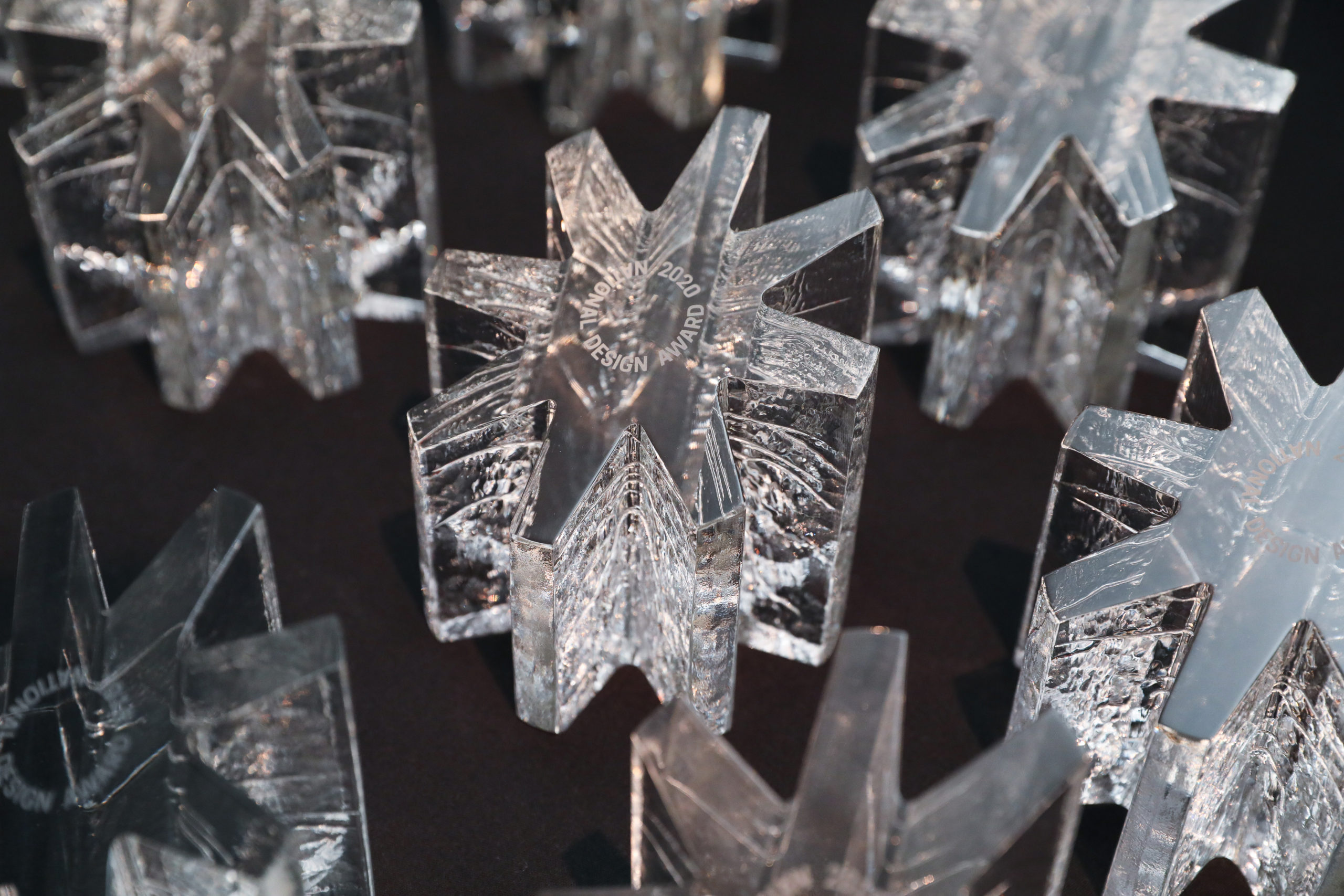
Image 1.
We are thrilled to invite Chris Rochelle, Corning’s Hot Glass Projects Team Leader, to describe the trophy fabrication process in his own words below.
Our melting furnace, powered with natural gas, runs at 2,100 degrees Fahrenheit and can hold up to 1,000 pounds of glass. To begin making a piece, a metal pipe or solid rod is dipped into molten glass held inside a large ceramic crucible. The glass is gathered on the end of the rod by making even rotations and forcing the glass to build upon itself. To acquire the amount of glass needed for each base trophy before it is personalized (called a blank), we need to build it up in multiple gathers (see images 2 and 3 for a trophy without any inscriptions). With the correct amount, the glass is shaped into a tapered cylinder and a tool is used to squeeze the glass down toward the end of the rod (this is where the glass object can be easily broken free from the rod when complete). The pre-shape must be just right in order to fit the glass perfectly into the graphite mold (image 4).
Images 2 and 3.
Image 4.
Once this step is done, the glass is allowed to cool enough to harden and stabilize in preparation for the final gather. Dipped back into the melting furnace to encase the rigid core in fresh molten glass, the full form is then immediately pressed into the graphite mold (images 5 and 6). At 2,100 degrees, the glass has a viscosity like honey and flows into the grooves of the mold, picking up the definition and shape. It needs to stay in the mold for roughly 20 to 30 seconds, until the glass becomes rigid. Afterward, the entire blank is broken free from the rod and placed into an annealing oven for slow cooling (image 7). This process takes about 34 hours and prevents stress from building up in the material. If hot glass cools too quickly it will break from thermal shock, which can be caused by the rapid change in temperature.
Images 5 and 6.
Image 7.
Once annealed, the blank is cut on both ends with a circular saw to remove excess material and to create the desired angle for the face of the award. Both ends must be further ground with grit and water and finally polished with cerium. The last step is to adhere a special photomask with the National Design Award logo to the face of the blank. Once the blank is fully taped off, the logo is sandblasted into the award.
We value our partnership with Chris and his team at Corning and the beautiful awards they enable us to present to the country’s leading designers, design thinkers, and design practices. Since the glass trophy produced by Corning was introduced, they have been awarded to National Design Award recipients in a range of categories, including Product Design, Fashion Design, Climate Action, and Emerging Designer. Learn more about the design evolution of the trophy and the honored design disciplines.
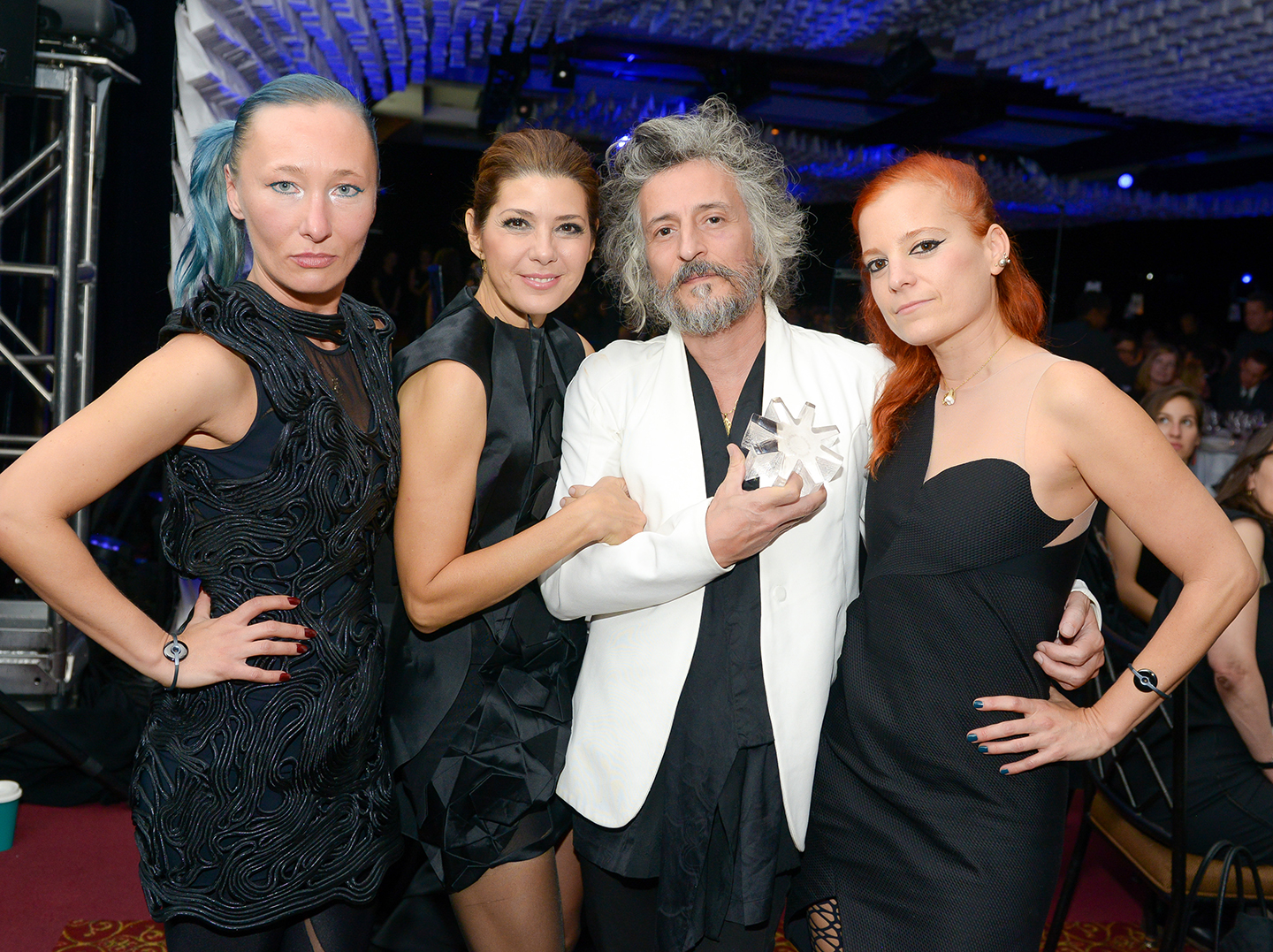
2015 National Design Award winners for Fashion Design Angela Donhauser, Gabi Asfour, and Adi Gil of threeASFOUR with presenter Marisa Tomei, 2015; Photo: Zach Hyman/BFA.com
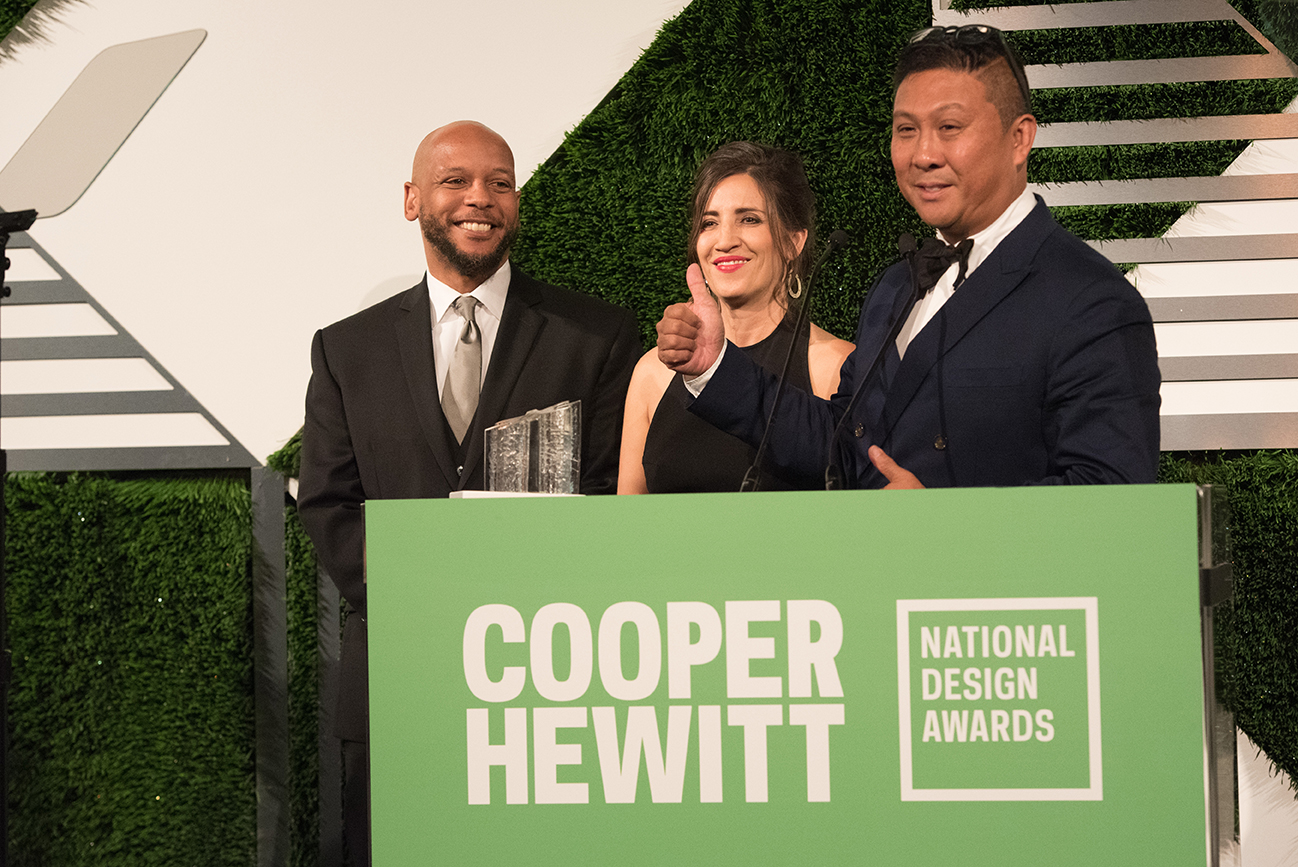
2016 National Design Award winners for Interior Design Perry Stephney, Verda Alexander, and Primo Orpilla of Studio O+A, 2016; Photo: Angela Jimenez Photography
Sarah Barack is Senior Objects Conservator and Head of Conservation at Cooper Hewitt.

